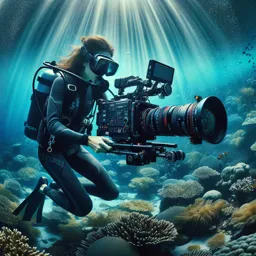Lighting is more than just a technical necessity in filmmaking—it’s a storytelling device that shapes mood, character, and emotion. From guiding the viewer’s eye to setting a scene’s tone, lighting transforms simple footage into cinematic art. This article explores essential lighting types, classic setups, creative applications, and practical tips for filmmakers seeking to master their visual storytelling through light.
Introduction
Lighting is a foundational element of film production. More than just making a subject visible, lighting conveys emotion, reveals character, and establishes visual tone. Whether you’re working on a big-budget feature or an indie short, understanding how to shape light effectively can make your story more powerful and immersive.
The Role of Lighting in Film
Lighting impacts almost every visual and emotional aspect of a film:
- Directs attention within the frame
- Establishes time, place, and atmosphere
- Sets the mood—tension, joy, mystery, or fear
- Defines a film’s visual style and cinematic language
Well-executed lighting can elevate even a modest production, while poor lighting can ruin a great performance or beautifully composed shot.
Key Types of Lighting
Understanding the core lighting elements is essential for controlling your visual outcomes:
- Key Light: The primary light source; defines the subject’s shape and mood.
- Fill Light: Reduces shadows created by the key light; adds balance.
- Back Light: Separates subject from the background; adds depth.
- Practical Lights: Visible in-frame (like lamps, TVs, candles); add realism and atmosphere.
Lighting Setups: An Overview
The classic three-point lighting setup includes:
- Key Light – Main illumination
- Fill Light – Softens shadows
- Back Light – Adds dimensionality
This balanced and adaptable setup is used in interviews, dramas, and even YouTube videos for a polished, professional look.
Creative Lighting Techniques
To elevate your visual storytelling, consider using more expressive approaches:
- High-Key Lighting: Bright, low contrast; ideal for comedies and upbeat scenes.
- Low-Key Lighting: Shadow-heavy; creates suspense or dramatic tension.
- Color Gels: Tinted filters for emotional and atmospheric enhancement (e.g., blue = cold, red = danger).
- Motivated Lighting: Imitates realistic sources (e.g., sunlight, TV glow) to maintain believability while enhancing mood.
DIY Tips for Aspiring Filmmakers
You don’t need expensive gear to start exploring great lighting:
- Use desk lamps, flashlights, or LED strips to mimic studio lighting.
- Create DIY reflectors using white foam boards or aluminum foil.
- Experiment with light angles and intensity to evoke different emotional tones.
- Record lighting tests to compare how variations affect mood and clarity.
Conclusion
Lighting is a powerful storytelling tool that blends creativity with technique. Mastering its fundamentals—while embracing experimentation—will help you craft films that not only look professional but also resonate emotionally. By learning how to manipulate light, you can shape the mood, amplify tension, or soften a moment, making your visual narrative truly cinematic.





















